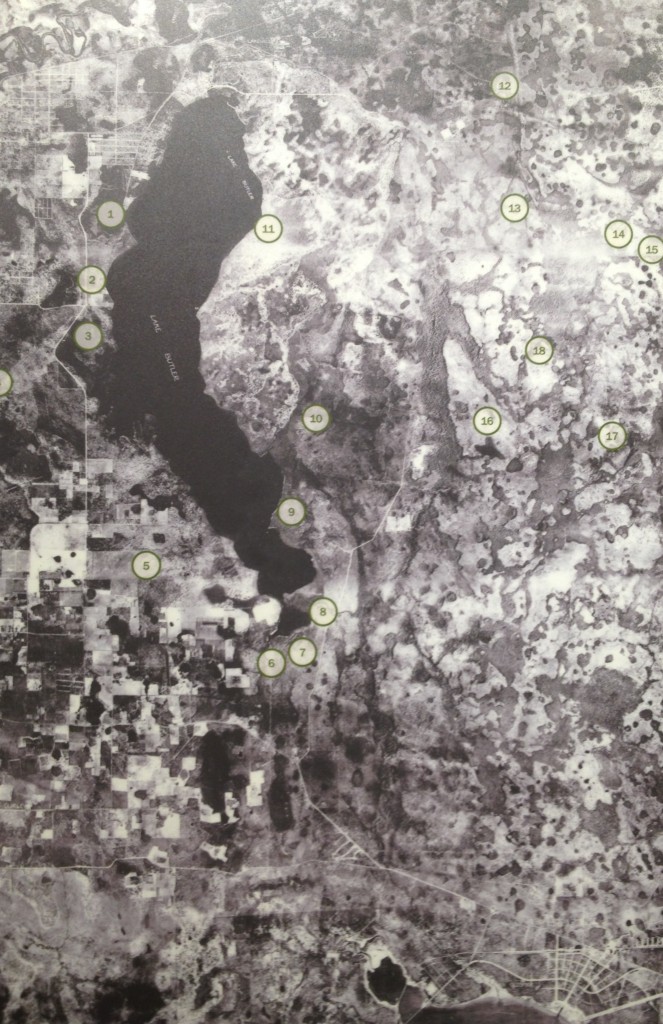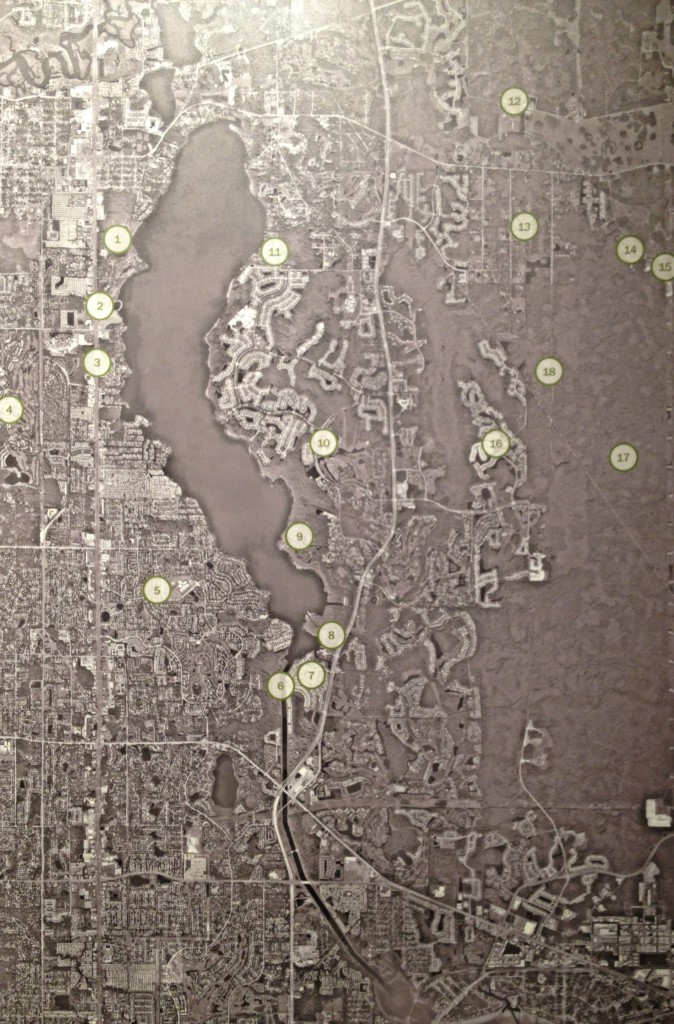It is hard to imagine what Pinellas County looked like in the early 1900s. Many long-time residents can share stories of US 19 as a one-lane dirt road, of 20 minute commutes from north to south county, of the open grasslands and cattle that roamed on Boot Ranch and the stories go on and on!
Take a look at the photos below and compare the images. Notice the tremendous amount of development in a relatively short period of time. Can you imagine being any animal species and trying to survive all of these changes?


Sure, we can complain about our commute to work, how many red lights we caught, how miserable it is to travel east-west, etc., but think about what our long-time animal residents might be saying if they could talk. Every little bit we can do to help bring natural landscapes back to Pinellas County can help wildlife find a safe place to call home.
Following these 10 steps can help you start your way towards a successful landscape for wildlife:
- Limit the Amount of Lawn – It’s not always easy with Home Owner Association requirements, but alternative ground covers such as sunshine mimosa (Mimosa strigillosa) and beach sunflower (Helianthus debilis) provide more food and cover for wildlife when compared to traditional turf grass.
- Increase Vertical Layering – Different animal species prefer different habitats, so by diversifying the types of plants (grasses, wildflower, shrubs, trees, vines, etc.) you grow in your yard, you can provide more options a wider range of wildlife.
- Provide Snags and Brush Piles – Got a dead tree? Consider trimming off the branches, but leaving the trunk intact to serve as a snag for wildlife like woodpeckers. Brush piles and fallen limbs also provide a great safe haven for a lot of the smaller animals.

A male pileated woodpecker (top) carved out this nest cavity in a snag at Brooker Creek Preserve which was later taken over by a screeh owl (bottom). - Provide Water – This can come in many forms, but any water source helps. Bird baths, ponds and butterfly-puddling stations are all great options. If you go with a bird bath, make sure to change the water out at least once a week to keep the mosquitoes from breeding, and to keep the water fresh for the birds.
- Plant Native Vegetation – Native vegetation not only attracts native wildlife, but is also easier to maintain and can withstand Florida’s climate, soils and pests better than exotics.
- Provide Bird/Bat Houses and Bird Feeders – Make sure to do your research before installing any bat or bird house. Diversifying the types of bird feeders and seed will also increase the diversity of birds you attract, but make sure you clean them out frequently to prevent mold and mildew from forming, especially during the summer. A great alternative to bird feeders is planting shrubs with attractive berries/fruits.
- Remove Invasive Exotic Plants – Invasive plants can alter native plant communities by displacing native species, changing the areas’ ecological function, or even hybridizing with natives. Not to mention, it costs lots of money to control invasive plants.
- Manage Pets – Cats and dogs can be very destructive to wildlife. Cats should be kept indoors and dogs should be watched carefully.
- Reduce Pesticide Use – Many pesticides do not target one specific species and the broad use of pesticides can cause more harm than good. The least toxic approach to pest management is called Integrated Pest Management or IPM. IPM involves proper maintenance of your landscape, the use of biological controls, selection of pest-resistant plants, the careful use of chemical controls when necessary and regular scouting for pests before they become a problem.
- Expand the Scale of Habitat – If you are considering the implementation of these steps in your yard, think about partnering with your neighbor or neighborhood to increase the scale of wildlife habitat created.
You can find more details on these 10 steps here and in the links provided in this post. I would love to hear about your experience in implementing one or more of these ideas! You can contact me via email, facebook, or twitter. I can’t speak for the animals, but in an anthropomorphic world, I bet the animals would say “Thank you!”
Additional Online Resources:
- Landscaping for Wildlife: http://livinggreen.ifas.ufl.edu/landscaping/landscaping_for_wildlife.html
- Landscaping for Wildlife Video: http://livinggreen.ifas.ufl.edu/tv_episodes/landscaping_for_wildlife.html
- Wildflowers: https://www.flmnh.ufl.edu/wildflower/
- Butterfly Gardening: http://pinellas.ifas.ufl.edu/documents/ButterflyGardening.pdf
- Florida-friendly Plant Database: http://floridayards.org/fyplants/
- Florida Association of Native Nurseries (FANN): http://www.afnn.org/
- Creating Wildlife Habitat w/ Native FL Freshwater Wetland Plants: http://edis.ifas.ufl.edu/fa007
- IFAS Assessment of Florida Non-native Plants: http://plants.ifas.ufl.edu/assessment/conclusions.html
Helpful Books:
- Landscaping for Florida’s Wildlife, Joe Schaefer and George Tanner
http://ifasbooks.ifas.ufl.edu/p-180-landscaping-for-floridas-wildlife.aspx
- Your Backyard Woods & Wildlife, Chris Demers, et al.
- The Florida-Friendly Landscaping TM Guide to Plant Selection & Landscape Design: http://www.swfwmd.state.fl.us/publications/files/fynplantguide-web.pdf
 0
0

